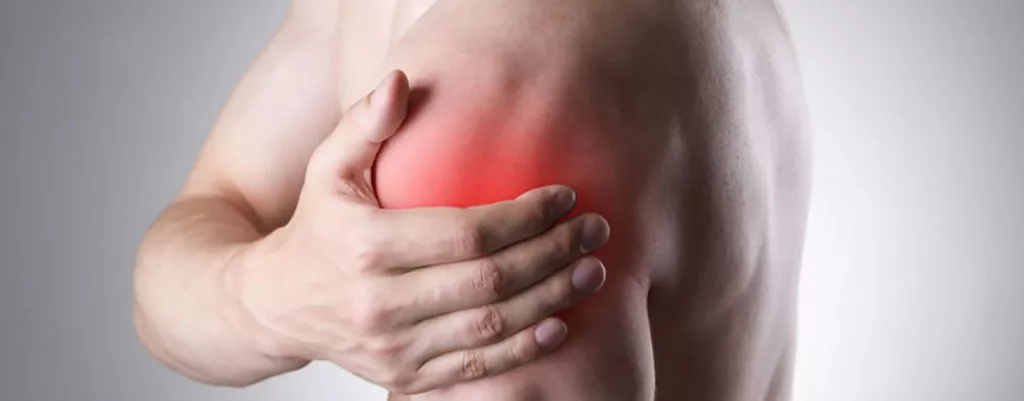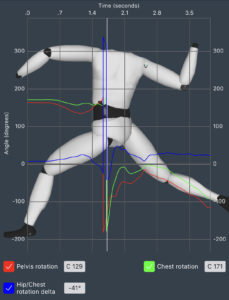
Are you experiencing Shoulder Pain from Pitching? Are you experiencing Shoulder Pain from Pitching? Pitchers frequently have shoulder soreness, particularly in baseball and softball. Throwing a ball repeatedly might result in overuse and injury. However, shoulder pain can be avoided or treated with the right methods and exercise. In this post, we’ll talk about adopting better mechanics, building a strong strength capacity, and avoiding overuse to treat shoulder pain caused by pitching. In order to gauge upper body strength and improve pitch count monitoring, we will also introduce a throwing apparatus. This article will offer helpful advice to help you keep a healthy and pain-free arm, whether you are a novice or an experienced pitcher.
Understanding the Causes of Shoulder Pain from Pitching
 Due to the repetitive motion involved in pitching a ball, pitchers frequently have shoulder soreness. Shoulder pain and damage can be caused by poor mechanics including arm drag and excessive shoulder abduction. When an arm drags behind the body during throwing, the shoulder is subjected to additional strain. When the arm is raised excessively far above the shoulder during the throwing motion, the rotator cuff is put under stress. This is known as hyper-shoulder abduction.
Due to the repetitive motion involved in pitching a ball, pitchers frequently have shoulder soreness. Shoulder pain and damage can be caused by poor mechanics including arm drag and excessive shoulder abduction. When an arm drags behind the body during throwing, the shoulder is subjected to additional strain. When the arm is raised excessively far above the shoulder during the throwing motion, the rotator cuff is put under stress. This is known as hyper-shoulder abduction.
Pitchers who have weak upper body strength will experience shoulder pain in addition to bad mechanics. When the muscles surrounding the shoulder joint are not strong enough to withstand the repetitive tension of throwing, injuries will occur. Utilizing a dynamometer, such as the one offered by ArmCare.com, one may track shoulder strength and spot any imbalances that might lead to injury.
To properly prevent and cure shoulder pain in pitchers, it is crucial to comprehend its causes. Pitchers can lower their risk of injury and maintain a healthy arm by concentrating on appropriate mechanics and building upper body strength. A critical component of injury prevention is monitoring shoulder strength with a dynamometer, like the ArmCare.com dynamometer. The shoulder can remain strong and pain-free by being regularly monitored and treated for any imbalances or weaknesses.
The Mechanics that Help Prevent Shoulder Pain from Pitching
 Proper mechanics are one of the most important elements in preventing shoulder injuries in pitchers. Better leg drives produce greater ground force energy, which when properly sequenced eases the strain placed on the shoulder. So, if you want to lighten the stress placed on your shoulder, focus on generating more power from your lower-half.
Proper mechanics are one of the most important elements in preventing shoulder injuries in pitchers. Better leg drives produce greater ground force energy, which when properly sequenced eases the strain placed on the shoulder. So, if you want to lighten the stress placed on your shoulder, focus on generating more power from your lower-half.
Additionally, critical to eliminating arm drag and lessening shoulder tension is hip-to-shoulder separation. The pitcher can better direct the energy produced by the legs into the throwing motion by separating the hips from the shoulders. This lessens the tension on the shoulder and prevents arm drag.
Forward trunk force is a crucial component in preventing shoulder injury, in addition to leg drives and hip to shoulder separation. The pitcher can lessen the strain on the arm by completing the generation of energy and channeling it to the ball using the trunk. This lessens the chance of damage and slows arm fatigue. Pitchers can maintain a healthy arm and lower their risk of shoulder pain and injury by concentrating on these techniques.
Developing upper body strength for injury prevention
It’s essential for pitchers to build upper body strength to avoid shoulder injuries. Upper body strength is a key component of the 3X Pitching Velocity Program since it helps to lessen the strain on the arm and lower the risk of injury. The program includes a lot of upper body lifting, such as using resistance bands and emphasizing overhead pressing with barbells and eventually heavy weights.
Pitchers should prioritize overhead pressing since it strengthens the shoulder and lowers their risk of injury. Pitchers can develop the strength required to withstand the repetitive stress of pitching by concentrating on overhead pressing. The resistance bands are utilized too in the off-season and in-season to help improve upper body strength. Because of the demands of the throwing motion, the ligaments on the front of the shoulder will stretch and loosen with the end result being the muscles in the back of the shoulder will tighten causing a reduced range of motion. When not properly addressed the reduced range of motion will lead to the normal throwing motion to be impaired and the athlete will develop poor throwing mechanics.
The use of an assessment tool like the ArmCare.com dynamometer is crucial to monitoring the development of upper body strength. The dynamometer makes it possible to evaluate strength gains and ensures that the current level of strength is sufficient. For the purpose of avoiding injuries and preserving a healthy arm, regular assessment of upper body strength is essential. Pitchers can lower their chance of injury and maintain a healthy arm by concentrating on upper body strength and using equipment like the ArmCare.com dynamometer.
Stretching and rehabilitation exercises for shoulder pain relief
 The key to reducing shoulder pain and accelerating healing is stretching and rehabilitation exercises. Exercises for strengthening the scapula, such as the push-up plus, are part of the 3X Pitching Velocity Program, which can assist in easing shoulder pain and speed up the recovery process. Strengthening the muscles that surround the shoulder with scapular training can lower the chance of injury and ease pain, as the muscles and tendons will be able to perform the role they were designed to function in. To support healthy shoulder movement, it is imperative to not overlook the smaller muscles and tendons. While they may not seem important due to their smaller stature, every muscle in the human body, God placed within you for a purpose.
The key to reducing shoulder pain and accelerating healing is stretching and rehabilitation exercises. Exercises for strengthening the scapula, such as the push-up plus, are part of the 3X Pitching Velocity Program, which can assist in easing shoulder pain and speed up the recovery process. Strengthening the muscles that surround the shoulder with scapular training can lower the chance of injury and ease pain, as the muscles and tendons will be able to perform the role they were designed to function in. To support healthy shoulder movement, it is imperative to not overlook the smaller muscles and tendons. While they may not seem important due to their smaller stature, every muscle in the human body, God placed within you for a purpose.
The 3X Pitching Velocity Program also incorporates a number of shoulder routines and mobility training exercises in addition to scapular training. These exercises can aid with pain relief, flexibility improvement, and range of motion. By enhancing the shoulder’s general wellbeing and functionality, the mobility training activities can also help lower the chance of injury and reduce the loss of internal rotation caused when the shoulder muscles tighten due to the repetitive high speeds associated with throwing. The importance of avoiding any shoulder injury cannot be stressed enough, as the recovery times for any shoulder operation range from 9-12 months before an athlete is fully recovered and able to begin even considering throwing a baseball again.
Pitchers can ease shoulder pain and accelerate healing by including stretching and rehabilitation exercises into their program. A thorough approach to shoulder health is provided through the 3X Pitching Velocity Program, which includes mobility training, shoulder exercises, and scapular training. Pitchers can lower their risk of injury and maintain a pain-free, healthy arm by concentrating on these workouts.
Relieve Shoulder Pain from Pitching NOW
 IIt’s time to begin the 3X Pitching Velocity Program if you’re looking for a reliable strategy to avoid shoulder pain and injuries. The workouts in this program include stretching and rehabilitation as well as the formula on how to develop good mechanics, upper body strength training, and shoulder health in depth. Additionally, we advise investing in the ArmCare.com strength management system to advance your training.
IIt’s time to begin the 3X Pitching Velocity Program if you’re looking for a reliable strategy to avoid shoulder pain and injuries. The workouts in this program include stretching and rehabilitation as well as the formula on how to develop good mechanics, upper body strength training, and shoulder health in depth. Additionally, we advise investing in the ArmCare.com strength management system to advance your training.
The strength management system from ArmCare.com is a useful resource for monitoring and measuring your progress. It gives you the information you need to evaluate your upper body strength and confirm that you are on track to meet your objectives. You may track your development, spot any imbalances, and modify your workout as necessary with the ArmCare.com strength management system.
So, if you’re prepared to increase your pitching abilities, begin the 3X Pitching Velocity Program right away. And make sure to buy the ArmCare.com strength management system to get the best results. You can keep your arm healthy and pain-free and perform to your maximum capacity as a pitcher with the correct equipment and training.




